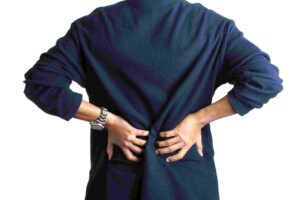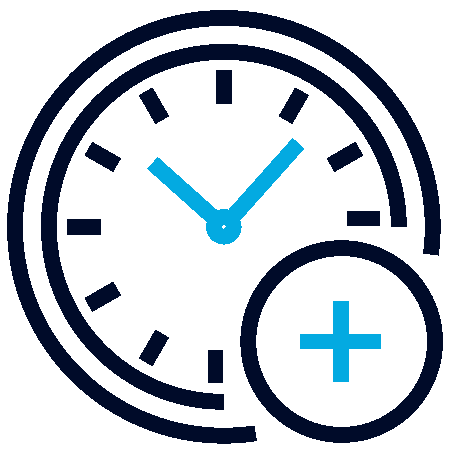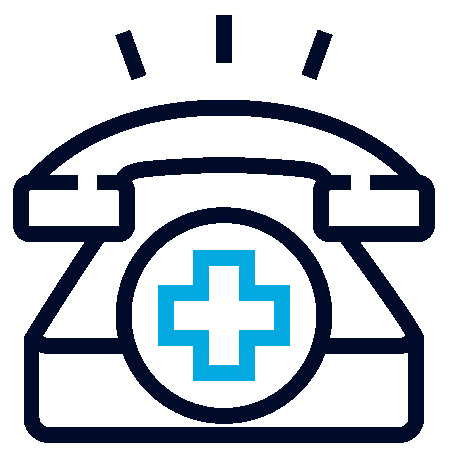Spinal stenosis is a debilitating condition that affects millions worldwide, causing pain, discomfort, and limitations in daily life. As explained by Doc. Dr. Ömer Bozduman, a distinguished expert in spinal health based in Samsun, understanding the nuances of spinal stenosis—its symptoms, causes, and treatment options—is essential for effective management. This comprehensive guide delves into the intricacies of spinal stenosis, offering practical insights into diagnosis, treatment, exercises, and lifestyle adjustments to help patients regain control of their lives.

What is Spinal Stenosis?
Spinal stenosis, also referred to as spinal canal stenosis, occurs when the spinal canal narrows, exerting pressure on the spinal cord or the nerve roots branching out from it. According to Doc. Dr. Ömer Bozduman, this condition most commonly affects the cervical (neck) or lumbar (lower back) regions of the spine, though it can occur anywhere along the spinal column. The narrowing can result from various factors, leading to symptoms that range from mild discomfort to severe neurological issues. Left untreated, spinal stenosis can significantly impair mobility and quality of life, making early intervention critical.
How Does Spinal Stenosis Affect the Spine?
The spine is a remarkable structure, comprising 33 vertebrae, intervertebral discs, ligaments, and nerves that work in harmony to support the body, protect the spinal cord, and enable movement. When the spinal canal narrows, it compresses the spinal cord or nerve roots, disrupting their ability to transmit signals effectively. This compression can lead to inflammation, pain, and reduced mobility. In cases of severe spinal stenosis, the pressure may cause permanent nerve damage, resulting in chronic weakness or loss of function. Doc. Dr. Ömer Bozduman emphasizes that understanding how spinal stenosis affects the spine is key to tailoring effective treatment plans.
Symptoms of Spinal Stenosis
Spinal stenosis symptoms vary widely depending on the location and severity of the narrowing. Doc. Dr. Ömer Bozduman outlines the following common signs:
- Chronic pain or cramping: Persistent pain in the neck, lower back, or legs, often worsening with activity like walking or standing.
- Numbness or tingling: A “pins and needles” sensation in the arms, hands, legs, or feet, indicating nerve irritation.
- Muscle weakness: Reduced strength in the limbs, making tasks like lifting objects or walking long distances challenging.
- Balance and coordination issues: Particularly in cervical spinal stenosis, patients may struggle with balance or fine motor skills.
- Bowel or bladder dysfunction: In rare, severe cases, nerve compression can affect bladder or bowel control, signaling a medical emergency known as cauda equina syndrome.
Recognizing these spinal stenosis symptoms early can prevent progression and improve outcomes. Patients often report symptoms that come and go, worsening with certain activities like prolonged standing or improving when leaning forward, a hallmark of lumbar stenosis.
What Causes Spinal Stenosis?
Spinal stenosis causes are diverse, ranging from natural aging processes to traumatic injuries. Doc. Dr. Ömer Bozduman identifies the following primary contributors:
- Aging and degenerative changes: As we age, the spine undergoes wear and tear, leading to conditions like osteoarthritis, disc degeneration, or thickened ligaments that narrow the spinal canal.
- Herniated or bulging discs: Intervertebral discs that rupture or protrude can encroach on the spinal canal, compressing nerves.
- Bone spurs: Overgrowth of bone due to arthritis can form spurs that reduce the space within the spinal canal.
- Spinal injuries: Trauma from accidents, falls, or sports injuries can cause swelling, misalignment, or fractures that contribute to stenosis.
- Congenital factors: Some individuals are born with a naturally narrow spinal canal, a condition known as congenital spinal stenosis.
- Tumors or abnormal growths: Though rare, benign or malignant tumors near the spine can compress the spinal cord or nerves.
- Inflammatory conditions: Diseases like ankylosing spondylitis can cause inflammation and structural changes in the spine.
Understanding these spinal stenosis causes allows specialists like Doc. Dr. Ömer Bozduman to develop targeted interventions tailored to each patient’s condition.
Who Is at Risk for Spinal Stenosis?
Certain populations are more susceptible to spinal stenosis. Doc. Dr. Ömer Bozduman highlights the following risk factors:
- Older adults: Individuals over 50 are at higher risk due to age-related degeneration of the spine.
- People with arthritis: Osteoarthritis or rheumatoid arthritis can accelerate spinal narrowing.
- Individuals with spinal injuries: A history of trauma, such as car accidents or falls, increases the likelihood of developing stenosis.
- Genetic predisposition: A family history of spinal conditions or congenital narrowing can elevate risk.
- Sedentary lifestyle: Lack of physical activity or poor posture can weaken spinal support structures, exacerbating the condition.
- Obesity: Excess body weight places additional stress on the spine, contributing to degeneration.
By identifying these risk factors, patients can take proactive steps to mitigate their chances of developing severe spinal stenosis.
How is Spinal Stenosis Diagnosed?
Accurate diagnosis is the cornerstone of effective spinal stenosis treatment. Doc. Dr. Ömer Bozduman employs a multi-faceted approach, including:
- Medical history review: Discussing symptoms, medical history, and lifestyle factors to identify potential causes.
- Physical examination: Assessing reflexes, muscle strength, sensation, and gait to evaluate nerve function.
- Imaging tests: X-rays to detect bone changes, MRIs to visualize soft tissues, or CT scans for detailed spinal imaging.
- Nerve function tests: Electromyography (EMG) or nerve conduction studies to assess nerve damage.
Recognizing Early Signs of Spinal Stenosis
Early detection can prevent complications. Subtle signs, such as intermittent back pain, stiffness after sitting, or mild numbness in the extremities, should prompt a visit to a specialist. Doc. Dr. Ömer Bozduman stresses that early intervention can halt progression and preserve spinal function.
How is Spinal Stenosis Treated?
Spinal stenosis treatment depends on the condition’s severity, the patient’s overall health, and their lifestyle goals. Doc. Dr. Ömer Bozduman advocates for a stepwise approach, starting with conservative measures and progressing to surgery for spinal stenosis when necessary.
Non-Surgical Treatment for Spinal Stenosis
Many patients find relief through non-surgical spinal stenosis treatments, which include:
- Medications: Nonsteroidal anti-inflammatory drugs (NSAIDs), analgesics, or muscle relaxants to manage pain and inflammation.
- Physical therapy: Customized programs to improve spinal flexibility, strengthen core muscles, and enhance posture.
- Epidural steroid injections: Corticosteroids injected into the spinal area to reduce inflammation and provide temporary pain relief.
- Lifestyle modifications: Weight loss, ergonomic adjustments, and activity pacing to minimize spinal stress.
- Alternative therapies: Acupuncture, chiropractic care, or massage to complement traditional treatments.
These spinal stenosis therapies are often effective for mild to moderate cases, allowing patients to avoid surgery.
Spinal Stenosis Treatment in Samsun
For residents of Samsun, Doc. Dr. Ömer Bozduman offers cutting-edge care for spinal stenosis. His clinic is equipped with advanced diagnostic tools, including MRI and CT imaging, and provides a range of treatments, from physical therapy to minimally invasive procedures. Patients benefit from his personalized approach, which combines evidence-based medicine with compassionate care. Whether exploring non-surgical options or considering spinal stenosis surgery, Samsun residents have access to world-class expertise.
How to Relieve Spinal Stenosis Pain?
Pain management is a critical aspect of living with spinal stenosis. Doc. Dr. Ömer Bozduman recommends the following strategies:
- Heat and cold therapy: Apply heat to relax tight muscles or cold packs to reduce inflammation and swelling.
- Posture correction: Use ergonomic chairs, lumbar supports, or standing desks to maintain proper spinal alignment.
- Activity modification: Avoid prolonged standing or activities that trigger symptoms, such as heavy lifting.
- Mind-body techniques: Practices like mindfulness, meditation, or yoga can reduce stress and improve pain tolerance.
- Over-the-counter aids: Braces or assistive devices to support the spine during daily activities.
Is Spinal Stenosis a Permanent Condition?
Spinal stenosis is often a chronic condition, particularly when caused by degenerative changes. However, Doc. Dr. Ömer Bozduman emphasizes that with proper management, many patients achieve significant symptom relief and maintain active lifestyles. While the structural narrowing may persist, non-surgical treatments can alleviate symptoms, and surgery for spinal stenosis can address severe cases to prevent permanent nerve damage. Regular follow-ups with a specialist ensure ongoing management and adaptation of treatment plans.
Exercises for Spinal Stenosis
Spinal stenosis exercises are a cornerstone of conservative treatment, helping to improve mobility and reduce pain. Doc. Dr. Ömer Bozduman recommends low-impact activities that strengthen the core and support spinal health.
Safe Stretches for Spinal Stenosis Patients
- Knee-to-chest stretch: Lie on your back, gently pulling one knee toward your chest for 20-30 seconds to relieve lower back tension.
- Cat-cow stretch: A gentle yoga sequence performed on all fours to enhance spinal flexibility and reduce stiffness.
- Seated forward bend: Sit with legs extended, slowly reaching toward your toes to stretch the hamstrings and lower back.
- Child’s pose: A restorative yoga pose to gently stretch the hips and lower back without straining the spine.
Spinal Stenosis Exercises to Avoid
Certain activities can exacerbate symptoms, particularly for those with cervical spinal stenosis. Things to avoid with cervical spinal stenosis include:
- High-impact exercises: Running, jumping, or high-intensity aerobics can jar the spine and worsen nerve compression.
- Heavy weightlifting: Lifting heavy weights overhead or with improper form can strain the neck or back.
- Extreme neck movements: Avoid rapid or excessive twisting, bending, or hyperextension of the neck.
- Prolonged static positions: Sitting or standing in one position for too long can increase pressure on the spine.
Always consult a healthcare provider or physical therapist before starting an exercise regimen to ensure safety and efficacy.
What Should People with Spinal Stenosis Pay Attention To?
Living with spinal stenosis requires vigilance and proactive self-care. Doc. Dr. Ömer Bozduman advises patients to:
- Prioritize posture: Use ergonomic furniture and avoid slouching to reduce spinal strain.
- Stay active within limits: Engage in low-impact activities like swimming, walking, or stationary cycling to maintain mobility.
- Monitor symptoms: Report new or worsening symptoms, such as increased numbness or weakness, to a doctor immediately.
- Manage weight: Maintaining a healthy weight reduces stress on the spine and improves overall health.
- Avoid overexertion: Pace activities to prevent fatigue and symptom flare-ups.
How Does Spinal Stenosis Affect Daily Life?
Spinal stenosis can profoundly impact daily life, affecting everything from mobility to emotional well-being. Patients may struggle with tasks like walking long distances, climbing stairs, or even sitting for extended periods. For example, lumbar stenosis often causes leg pain that worsens with walking (neurogenic claudication), forcing patients to rest frequently. Cervical spinal stenosis may lead to difficulties with fine motor tasks, such as writing or buttoning a shirt. However, with appropriate spinal stenosis treatments, many patients adapt and maintain fulfilling lives. Support from specialists, family, and community resources can make a significant difference.
Can Spinal Stenosis Be Prevented?
While not all cases of spinal stenosis are preventable, certain strategies can reduce the risk or delay its onset. Doc. Dr. Ömer Bozduman recommends:
- Regular exercise: Engage in core-strengthening and flexibility exercises to support spinal health.
- Healthy weight management: Maintain a balanced diet to avoid excess weight that strains the spine.
- Proper posture habits: Use ergonomic workstations and practice good posture during daily activities.
- Early intervention for spinal issues: Address minor back or neck pain promptly to prevent progression.
- Avoid smoking: Smoking accelerates disc degeneration, increasing the risk of stenosis.
By adopting these preventive measures, individuals can minimize their risk and promote long-term spinal health.
This expanded article provides an in-depth exploration of spinal stenosis, leveraging the expertise of Doc. Dr. Ömer Bozduman to offer practical, patient-centered advice. From diagnosis to treatment and prevention, the guide empowers readers to manage their condition effectively. For those in Samsun or elsewhere, consulting a specialist like Doc. Dr. Ömer Bozduman can provide tailored solutions to improve quality of life.



